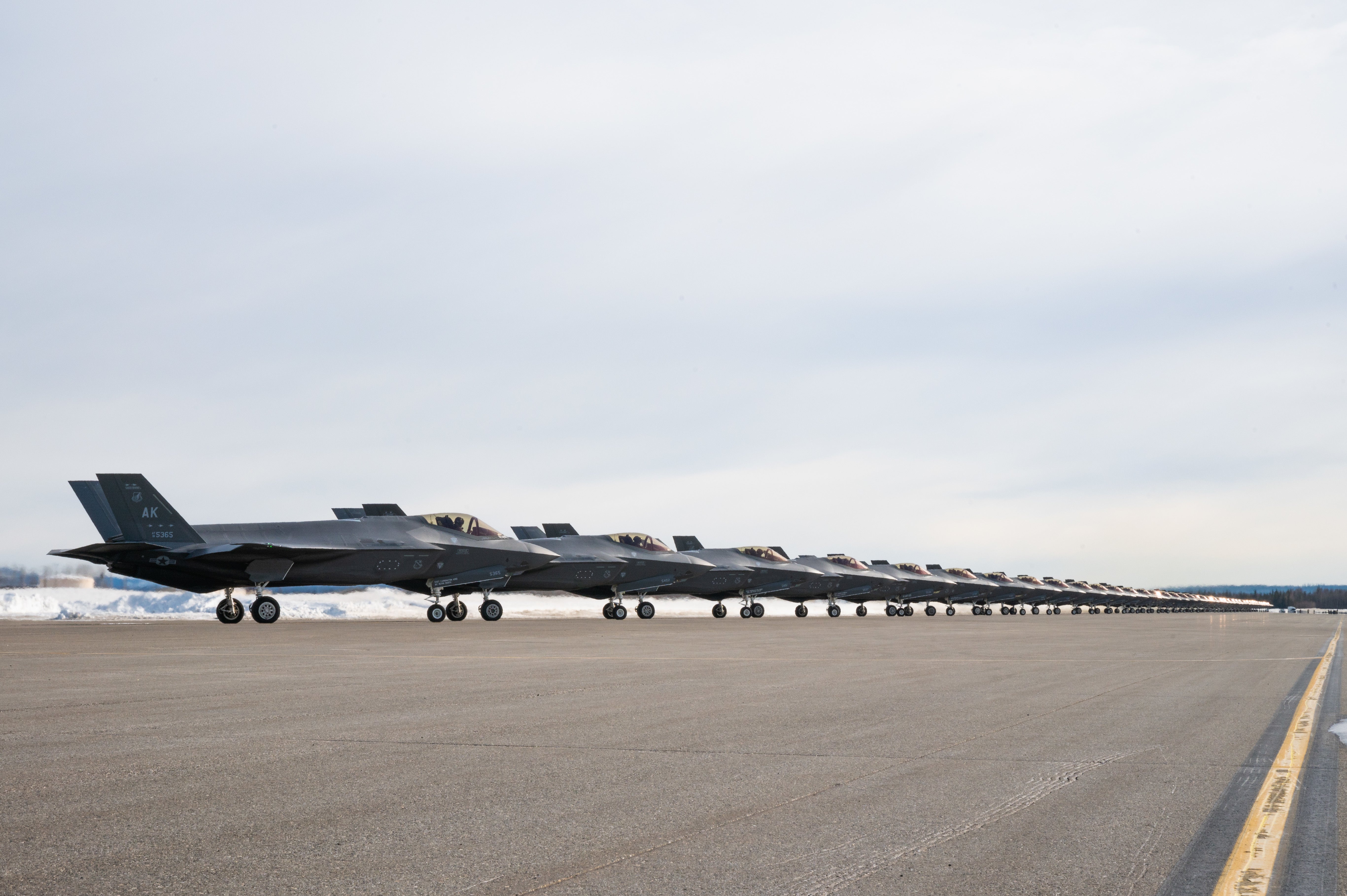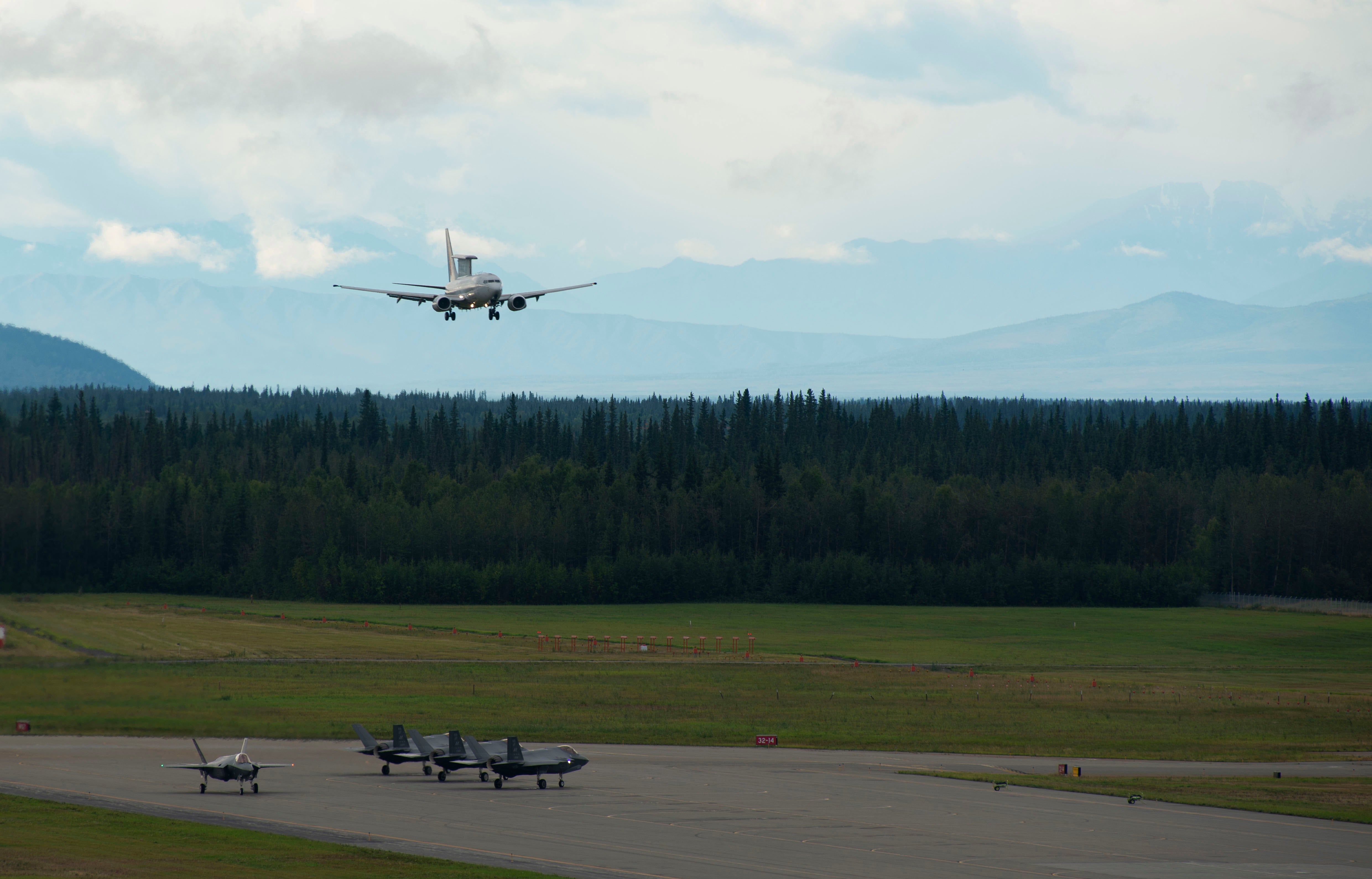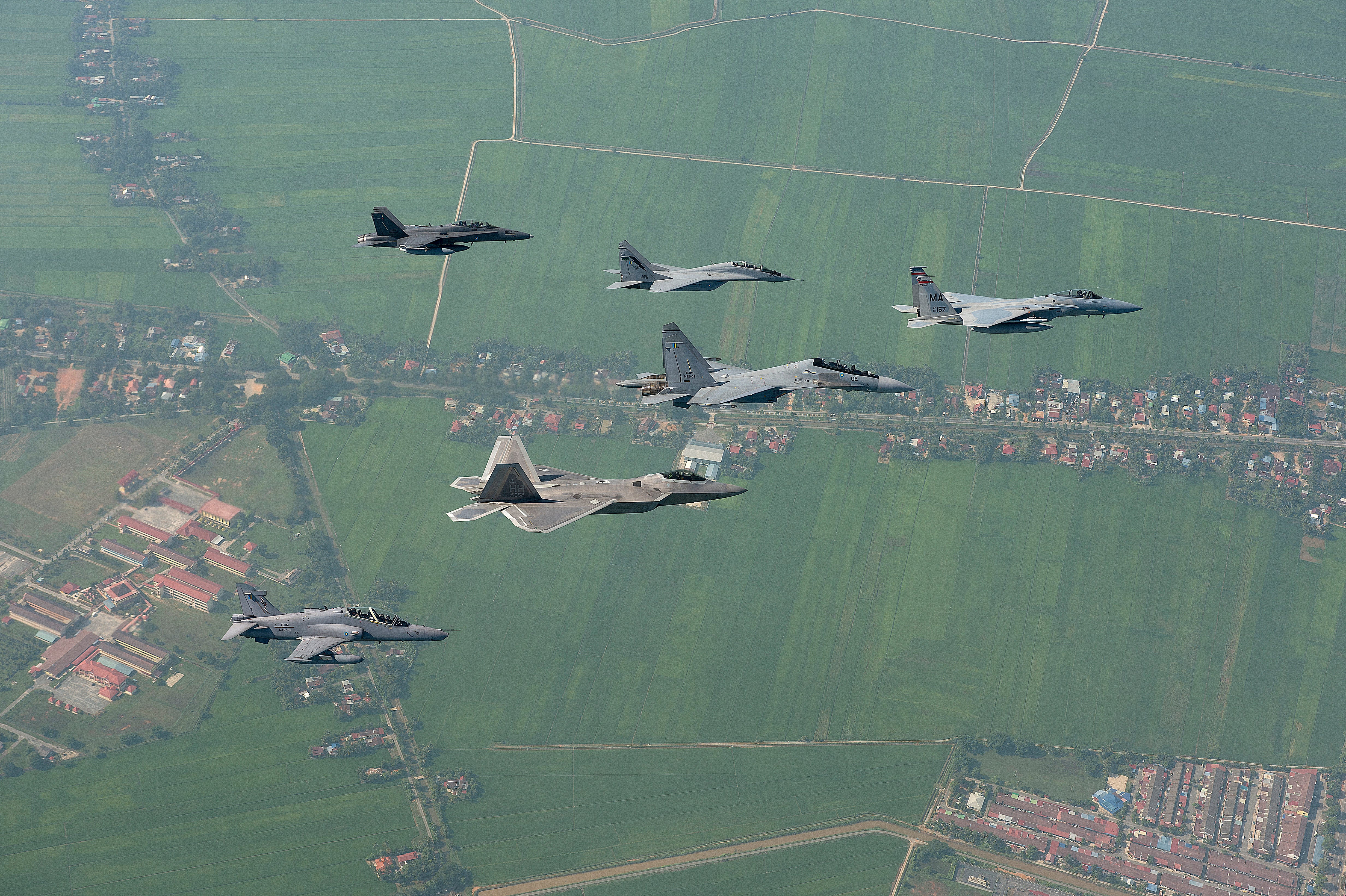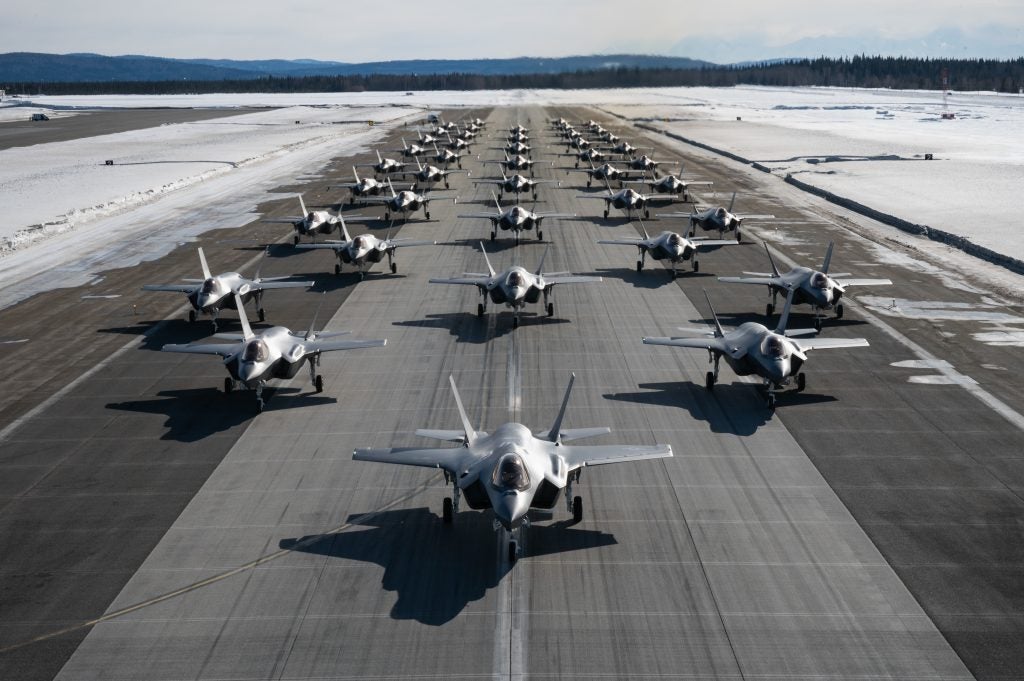Eielson Air Force Base Completes Two-year F-35A build-up
Eielson Air Force Base completed its two-year build-up of the 354th Fighter Wing on April 15th. The airbase, which is located near Fairbanks, Alaska, was selected by the Air Force in 2016 as the first operational overseas base to host the F-35A. The 354th Fighter Wing started receiving its first F-35A Lightning II aircraft on April 6th, 2020.
Eielson Air Force Base began extensive renovations in 2017 ahead of the F-35A bed down, with the total costs of the project hovering at around $600 million. The renovations included the construction of new insulated shelters to protect the F-35A from the freezing Alaskan winter, allowing airmen and maintainers to work on the aircraft throughout the winter. The base housing and quality of life infrastructure also needed to expand in order to cope with the increase in personnel.
With the conclusion of F-35A deliveries, the 354th Fighter Wing currently fields 54 F-35As, the aircraft are equally spread out across the Wing’s two F-35A squadrons; the 356th Fighter Squadron which was reactivated in October 2019, and the 355th Fighter Squadron which was reactivated on December 2020. Each of the fighter squadrons is now equipped with 27 combat-coded F-35As, which constitutes a full squadron.
Alaska: Home to Fifth Gens

The bed down of the 354th FW is very important as it marks a vital moment for the Pacific Air Forces and the Indo-Pacific Command (INDOPACOM), the new aircraft will expand the resources available in Alaska, which is already home to the F-22, the Air Force’s only other fifth-gen aircraft. Based out of Joint Base Elmendorf-Richardson, 47 F-22s have also called the state home for the last one and half decades after replacing F-15Cs stationed there. The F-22s belong to the 525th FS and 90th FS of the 3rd Wing, the largest subordinate unit to the Eleventh Air Force.
The low population density of Alaska allows the Air Force to utilize the Joint Pacific Alaska Range Complex (JPARC), which gives the service 65,000 square miles of airspace. The size of the JPARC airspace enables the US Air Force and its partner nations to conduct major training events such as exercise RED FLAG Alaska and Northern Edge, allowing the services to craft aerial tactics combining fourth and fifth generation aircraft.
“When you station the F-35 at Eielson and you have the F-22 Raptor at Joint Base Elmendorf-Richardson, continuously working together in the JPARC with our 18th Aggressor Squadron and advanced ground training assets, you have the best training field to advance high-end airpower operations,” said Col. David Berkland, 354th Fighter Wing commander, in a press release. In recent years, these exercises have grown in complexity and size, allowing the Air Force to test out systems such as the F-15’s latest electronic warfare system, Eagle Passive Active Warning Survivability System (EPAWSS), working in tandem with F-35As to provide stand-in jamming. Partner nations such as Australia and Japan have also participated in these large and complex exercises, often demonstrating the unique capabilities of their systems such as the Royal Australian Air Force’s E-7A Wedgetail, which the U.S. Air Force has selected to replace the E-3 Sentry.

Training is a very important aspect of competition that is often neglected when comparing the level of engagement China or the United States have in the Pacific. Having the capability to provide realistic training that can’t be replicated by host nations, is a very important part of honing military relations and passing on valuable input to friendly armed forces in the region. As such, the F-35 will give INDOPACOM unique opportunities to cooperate with Pacific nations when it comes to training, nations in the South East Asia region will now have the opportunity not just to train alongside, but to also train against.
Fifth-gen Training as a Form of Cooperation
F-35s and F-22s in Alaska have been forward deployed across the Pacific to participate in exercises, recently a group of F-35As flew to Kadena, Japan from their home base in Alaska to partake in a week-long exercise with the Japan Air Self Defense Force, while others flew to Guam to take part in exercises there. F-22s have been participating in exercises across the Asia-Pacific region for a decade and were involved in exercises such as Cope Taufan with the Royal Malaysian Air Force.

These deployments will help the Air Force understand the requirements of its latest doctrine for the Pacific called Agile Combat Employment (ACE), which we have written about in-depth here. The doctrine calls for rapid dispersal from the Air Force’s major air bases in the region in the event of an attack, to smaller temporary forward operating airfields, these forward operating airfields will then be used to rearm and refuel the aircraft. The success of ACE lies in the Air Force’s ability to disperse to hundreds of airfields and airports across allied nations, making deeper cooperation with current and future allies a very important part of ACE.
The build-up of fifth-generation aircraft in the Pacific Air Forces highlights the Air Force’s shift to the Pacific as the main theater of importance in the coming years. The states of Alaska and Hawaii, which together host 124 fifth-generation aircraft, make up the Air Force’s second line of response in the case of a conflict over Taiwan; these units are far away enough to be out of reach of Chinese rocket forces but close enough to be over potential flashpoints within 8 hours.

